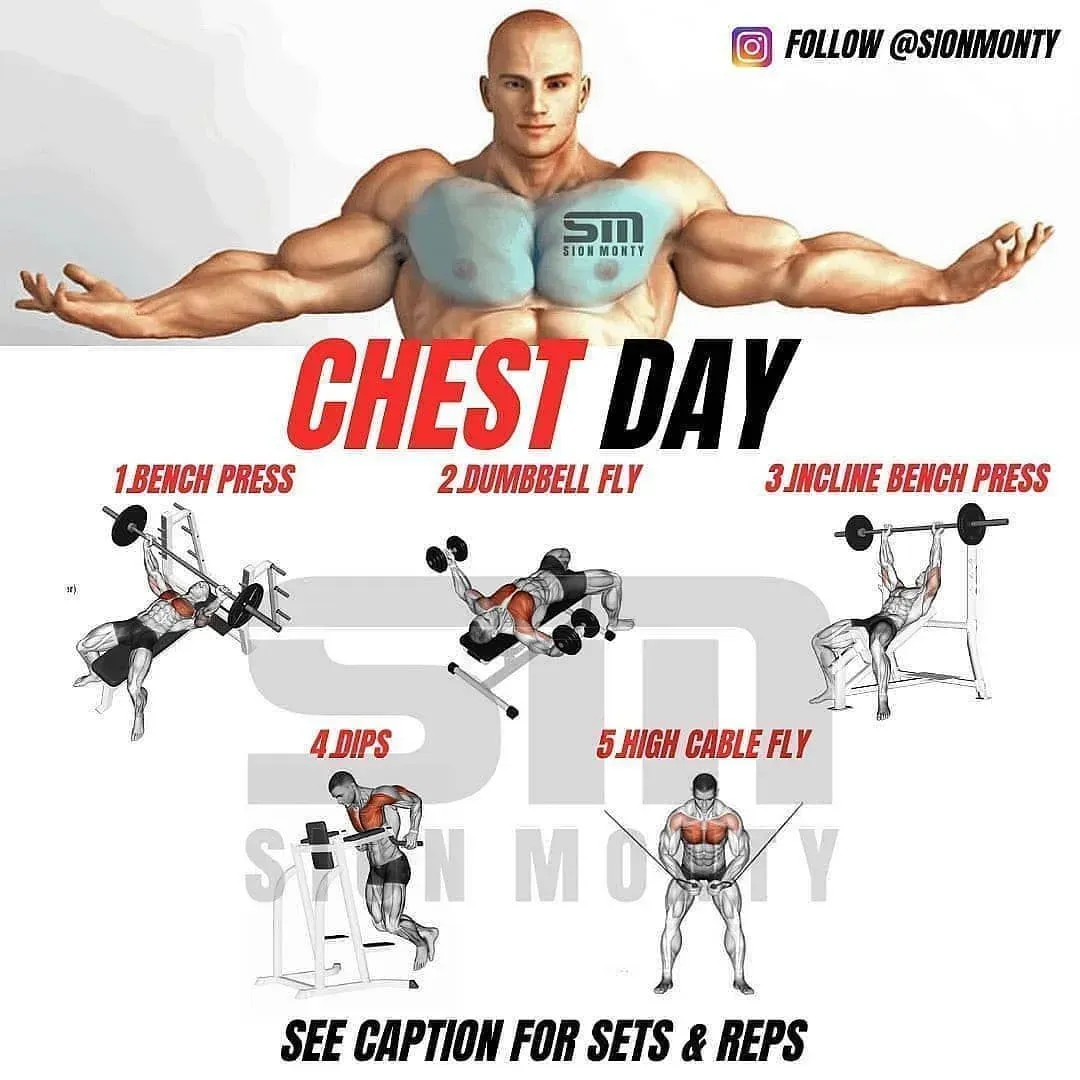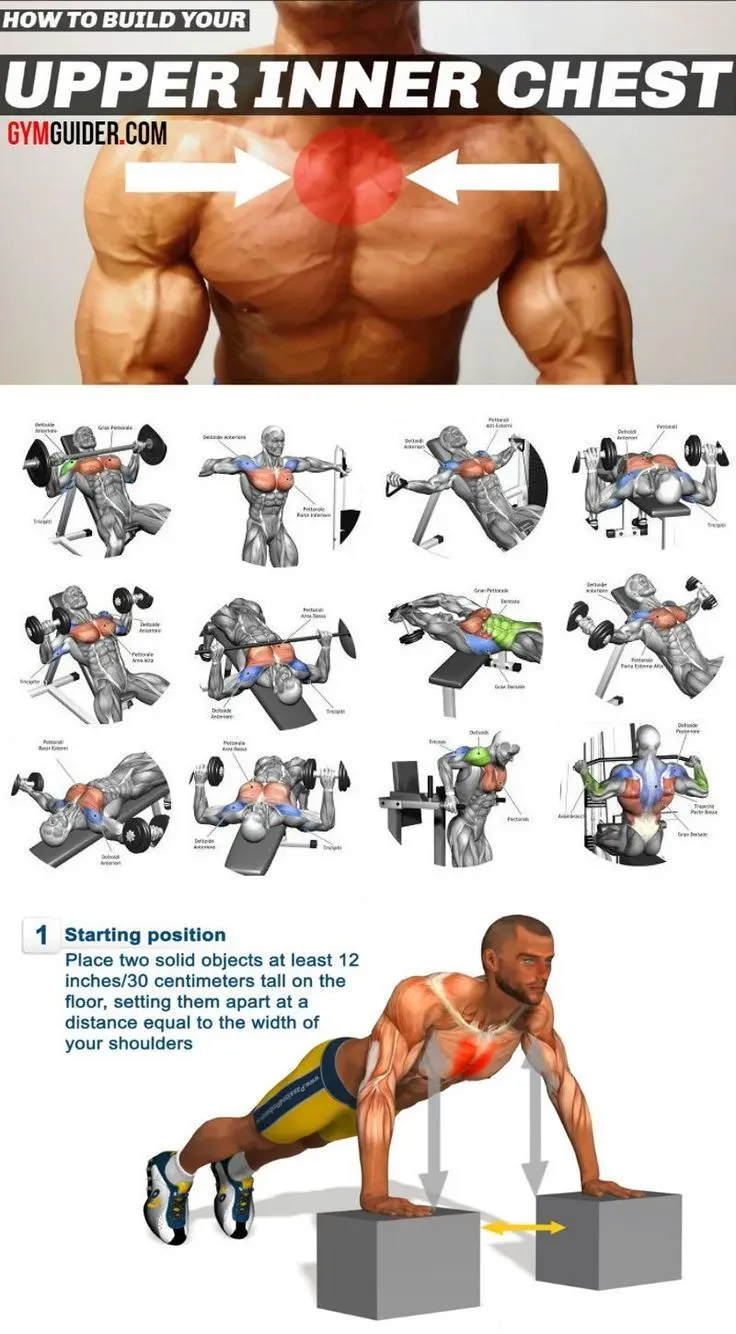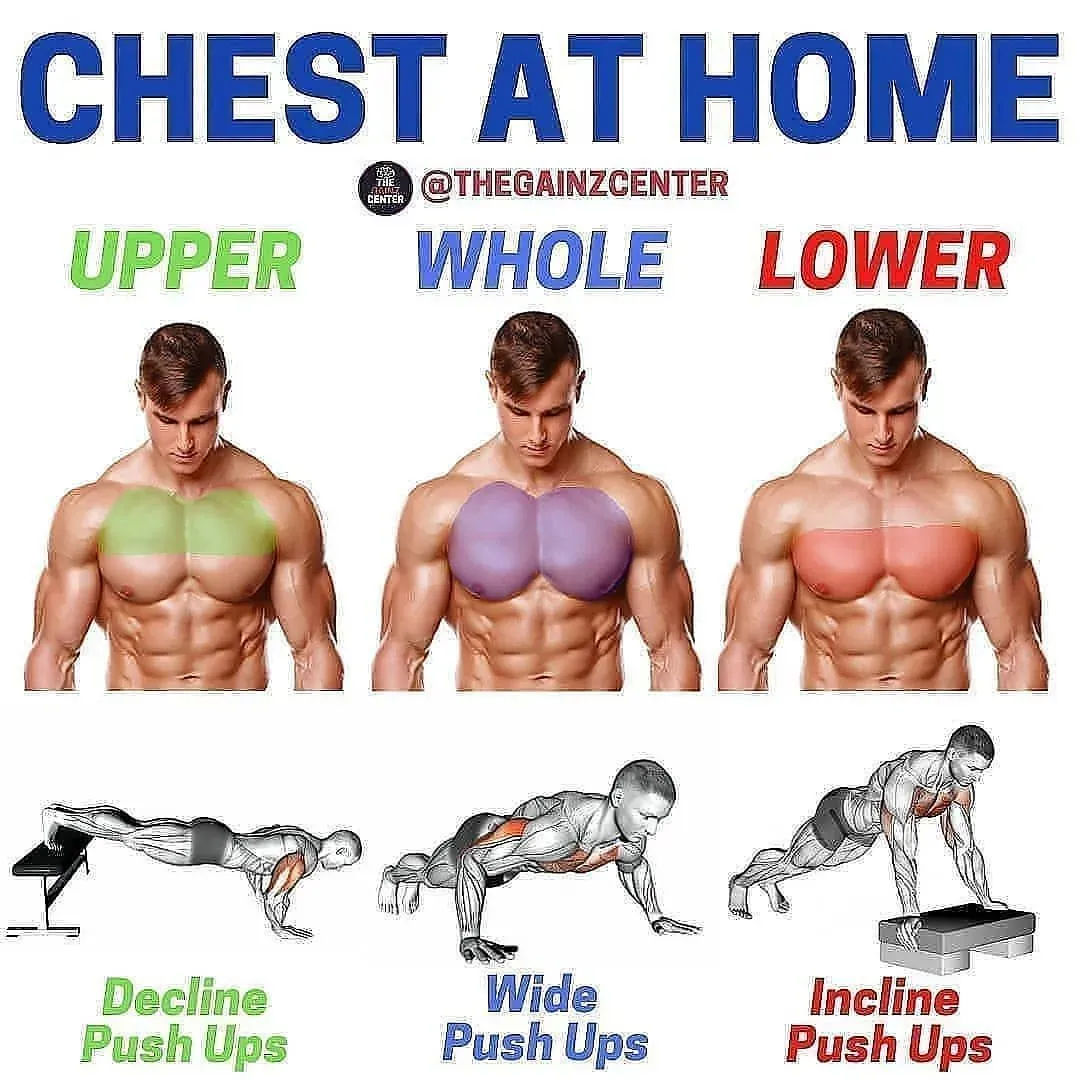Table of Contents
Thinking you need a fancy gym with piles of weights to get a defined, lean chest? Think again. You can absolutely sculpt a strong, aesthetic chest right from your living room floor. Forget expensive memberships and crowded spaces. This guide is all about giving you the tools for an effective lean chest workout at home, using little to no equipment. We'll cut through the noise and show you exactly what works.
Getting Started: Your Lean Chest Workout At Home Blueprint

Getting Started: Your Lean Chest Workout At Home Blueprint
Finding and Prepping Your Space
so you've decided to tackle that lean chest workout at home. First order of business: finding a spot. You don't need a dedicated home gym. A clear area roughly the size of a yoga mat is usually plenty. Push the coffee table aside, move that stray chair – clear the decks. Make sure the surface is flat and stable. You don't want to be wobbling mid-push-up. A little prep goes a long way here. Think of it as your personal training zone, even if it's just for 30 minutes.
Consider the floor. Hardwood or tile can be rough on wrists and knees. A mat, or even a folded towel, can make a huge difference in comfort and grip. Good grip is crucial for exercises like push-ups, preventing slips and potential injuries. Also, check the lighting and ventilation. You want to feel comfortable and focused, not squinting in a dim corner or sweating in a stuffy room. Simple things, but they matter for consistency.
The Right Mindset and Consistency
Getting a lean chest with home workouts isn't about overnight miracles. It's about showing up consistently. You need to commit to the process. Think of it like brushing your teeth – you just do it. Set realistic goals for your lean chest workout at home. Maybe it's starting with just a few sets of push-ups, or doing your routine three times a week. Don't aim for perfection on day one.
Building muscle and definition takes time. There will be days you don't feel like it. That's normal. Push through those days. Remind yourself why you started. Is it to feel stronger? To look better in a t-shirt? Keep that motivation front and center. Celebrate small wins – maybe you did one more push-up than last week, or held a plank a few seconds longer. Progress, not perfection, is the name of the game here.
What You Need for Your Home Chest Workout:
- Clear floor space (about 6ft x 4ft)
- A comfortable surface (yoga mat or towel recommended)
- Comfortable workout clothes
- Water bottle
- Motivation and consistency (non-negotiable!)
Warming Up Matters
Before you dive into those push-ups and other chest crushers for your lean chest workout at home, you absolutely need to warm up. This isn't optional; it's injury prevention 101. A proper warm-up gets your blood flowing, increases muscle temperature, and prepares your joints for movement. Cold muscles are tight muscles, and tight muscles are more prone to pulls and strains.
Spend 5-10 minutes doing some light cardio like jogging in place, jumping jacks, or high knees. Follow that with dynamic stretching. Arm circles, shoulder rotations, torso twists – movements that take your joints through their full range of motion. Don't static stretch cold muscles; save the long holds for after your workout. A good warm-up ensures you can perform your exercises effectively and safely, setting you up for a much better session.
Essential Exercises for a Lean Chest Workout At Home (No Equipment Needed)

Essential Exercises for a Lean Chest Workout At Home (No Equipment Needed)
The Mighty Push-Up: Your Foundation
Alright, let's get down to brass tacks. When you're talking about a lean chest workout at home without equipment, the push-up is king. Period. It's simple, effective, and scalable. A standard push-up works your entire chest (pectorals), shoulders (deltoids), and triceps. Proper form is crucial, though. Hands slightly wider than shoulder-width, fingers pointing forward. Keep your body in a straight line from head to heels – no sagging hips or piking butts. Lower your chest towards the floor, aiming to get your elbows to about a 90-degree angle, then push back up powerfully. Focus on squeezing your chest muscles at the top.
Don't feel bad if you can't do a full push-up on your toes right away. That's where variations come in. Start on your knees if you need to, maintaining that straight body line. As you get stronger, gradually work towards doing them on your toes. You can also adjust hand placement to target different parts of the chest. A wider grip emphasizes the outer chest, while a narrower grip hits the inner chest and triceps more.
Adding Variation: Elevate and Decline
Once you've mastered the standard push-up, it's time to mix things up to keep challenging your muscles for that optimal lean chest workout at home. Elevating your hands makes the exercise easier, which is great for beginners or for higher rep sets. You can use a sturdy chair, a stack of books, or a countertop. The higher the elevation, the easier it is. This helps build strength towards doing full push-ups on the floor.
Conversely, putting your feet on an elevated surface (like a chair or bench) creates a decline push-up. This shifts more of the load onto your upper chest (clavicular head of the pectorals), which is key for that defined look near your collarbone. It's a tougher variation, so approach it when you feel strong and stable. Varying your exercises prevents plateaus and ensures you're hitting the chest from different angles, leading to more balanced development.
Push-Up Variations for Your Home Chest Workout:
- Standard Push-Ups (on toes or knees)
- Incline Push-Ups (hands elevated)
- Decline Push-Ups (feet elevated)
- Close Grip Push-Ups (hands narrower than shoulder-width)
- Wide Grip Push-Ups (hands wider than shoulder-width)
Structuring Your Weekly Lean Chest Workout At Home Routine

Structuring Your Weekly Lean Chest Workout At Home Routine
Finding Your Rhythm: How Often to Train
so you've got your space, you're warmed up, and you know your push-up variations. Now, how often should you actually do your lean chest workout at home? You're not trying to burn out on day three. Consistency beats intensity when you're starting out. For most people aiming for muscle growth and definition, hitting your chest muscles 2-3 times per week is a solid starting point. This gives your muscles enough stimulus to grow but also crucial time to recover.
Trying to do chest exercises every single day? That's a fast track to overtraining, frustration, and stalled progress. Muscles don't grow while you're working out; they grow when you're resting and recovering. Think of rest days as just as important as workout days. Seriously. Your body needs that downtime to repair the muscle fibers you broke down during your session. Skipping rest is like trying to build a house without letting the cement dry.
Structuring Your Week: Full Body or Split?
How you structure your weekly lean chest workout at home routine depends on your overall fitness goals and how much time you have. A simple approach when you're just focusing on bodyweight is often integrating chest work into a full-body routine. This means you might do chest exercises, leg exercises, back exercises, and core work all in the same session, 2-3 times a week.
Alternatively, if you're training more frequently (say, 4-5 times a week) and want to dedicate more volume to specific muscle groups, you could use a split routine. For a home bodyweight setup, this might look like an upper body day (including chest, shoulders, back, arms) and a lower body day (legs, glutes, core). Just make sure you're not hitting the same muscle group intensely two days in a row. Give those chest muscles at least 48 hours, ideally 72 hours, before hitting them hard again.
Sample Weekly Structures for Lean Chest Workout At Home:
- Option 1 (Full Body): Monday (Full Body), Wednesday (Full Body), Friday (Full Body)
- Option 2 (Upper/Lower Split): Monday (Upper), Tuesday (Lower), Thursday (Upper), Friday (Lower)
- Option 3 (Lower Frequency): Tuesday (Full Body), Saturday (Full Body)
Sets, Reps, and Progression
When doing your lean chest workout at home, aim for a rep range that challenges you while maintaining good form. For building muscle, somewhere between 8-15 repetitions per set is a common target. If you can easily do more than 15 push-ups with perfect form, it's time to make the exercise harder (more on that later). Aim for 3-4 sets per exercise.
Progression is non-negotiable if you want to keep seeing results. Your body adapts. If you keep doing the same number of push-ups forever, you'll stop making progress. How do you progress without adding weight? Increase the number of reps, add more sets, decrease rest time between sets, or move to a harder variation (like going from knee push-ups to toe push-ups, or toe push-ups to decline push-ups). Always strive to do a little bit more than you did last time. That constant challenge is what forces your muscles to grow stronger and leaner.
Beyond the Basics: Adding Intensity to Your Home Chest Sessions

Beyond the Basics: Adding Intensity to Your Home Chest Sessions
Slow Down and Feel the Burn
so you've mastered the standard push-up and variations feel a bit too easy now? Great. Time to turn up the heat on your lean chest workout at home without adding any weight. One of the simplest yet most brutal ways to increase intensity is by manipulating time under tension. Instead of just pumping out reps as fast as possible, slow things way down. Try lowering yourself for a count of three or four seconds, pause for a second at the bottom (chest hovering just above the floor), and then explode back up. Or, try pulse push-ups at the bottom range of motion. This keeps the muscle fibers working harder for longer within each rep, creating more metabolic stress, which is a key driver for muscle growth.
It feels counterintuitive at first – doing fewer reps might seem like less work. But trust me, doing 10 slow, controlled push-ups with a pause is often far more challenging than 20 rushed ones. This method forces you to focus on the mind-muscle connection, really concentrating on squeezing your chest throughout the movement. It strips away momentum and makes your muscles do all the grunt work. Give it a shot and see how quickly your chest fatigue sets in.
Introduce Explosive and Unilateral Moves
Ready to really challenge your stability and power during your lean chest workout at home? Plyometric push-ups are your friend. Think clapping push-ups, or simply pushing up with enough force that your hands leave the ground. This develops explosive strength, which is cool, but it also demands a lot more from your muscles in a short burst. Start by just trying to get your hands off the ground slightly, then work towards a full clap or even pushing off a low surface. Just make sure you have soft landing space or good wrist stability.
Another way to crank up intensity is through unilateral work – exercises that challenge one side at a time. Archer push-ups are a prime example. You lower yourself down towards one hand while extending the other arm out to the side. This puts significantly more load on the working side's chest muscle. It's tough, requires good core stability, and really highlights any strength imbalances you might have. Don't expect to nail these on your first try. It's a progression, starting with a wider stance and less bend in the extended arm.
Intensity Technique | How it Works | Example Exercise |
|---|---|---|
Slow Negatives | Control the lowering phase (3-4 seconds) | Slow Lowering Push-Ups |
Pauses | Hold at the bottom or mid-range | Bottom-Pause Push-Ups |
Explosive Movement | Push up powerfully, hands leave ground | Clapping Push-Ups |
Unilateral Loading | Focus load on one side | Archer Push-Ups |
Leverage Your Surroundings and Simple Tools
You don't need a full weight rack for a challenging lean chest workout at home. Look around your space. Got a sturdy backpack? Load it up with books or water bottles and wear it during your push-ups. Instant added resistance! Even a simple towel can be used for sliding push-ups, where one hand slides out to the side as you lower, creating an unstable surface that forces your chest and core to work harder to stabilize. If you have a set of resistance bands laying around from that fitness phase you had three years ago, now's the time to dig them out. Loop a band around your back and hold the ends in your hands during push-ups; it adds resistance, particularly at the top of the movement where push-ups are typically easiest.
These aren't complicated hacks. They're practical ways to apply progressive overload – the principle of constantly challenging your muscles – without needing traditional gym equipment. It's about being resourceful and creative with what you have. Adding a weighted backpack might feel awkward initially, but it's a legitimate way to make those familiar push-ups feel heavy again. Don't underestimate the power of these simple tools in keeping your home chest workouts effective and engaging.
Common Pitfalls to Avoid When Doing Lean Chest Workouts At Home

Common Pitfalls to Avoid When Doing Lean Chest Workouts At Home
Alright, so you're crushing those push-ups and feeling the burn. That's fantastic! But even with the best intentions for your lean chest workout at home, it's easy to stumble into some common traps that can slow your progress or, worse, lead to injury. One of the biggest slip-ups I see is sacrificing form for reps. Nobody cares if you can do 50 shaky, half-range push-ups with your hips sagging and neck craning. Seriously, stop it. You're not impressing anyone, and you're barely working your chest. Focus on controlled movements, a full range of motion (chest close to the floor), and keeping that body straight. Quality over quantity, always. Another classic error? Ignoring progression. If you're still doing the same easy variation for the same number of reps month after month, your muscles have zero reason to grow. You have to consistently challenge yourself, whether that's by adding reps, sets, slowing down the tempo, or moving to a harder variation. Stagnation is the enemy of progress.
Your Lean Chest, Forged at Home
So, there you have it. Building a lean, defined chest doesn't require a pilgrimage to the nearest gym or shelling out cash for expensive equipment. The principles of an effective lean chest workout at home are simple: consistent effort, proper form, and smart progression. You've got the foundational exercises, a framework for your routine, and ways to push yourself as you get stronger. Stop making excuses about not having access to a weight rack. Your body is the only machine you truly need. Stick with it, challenge yourself, and watch the results take shape.
